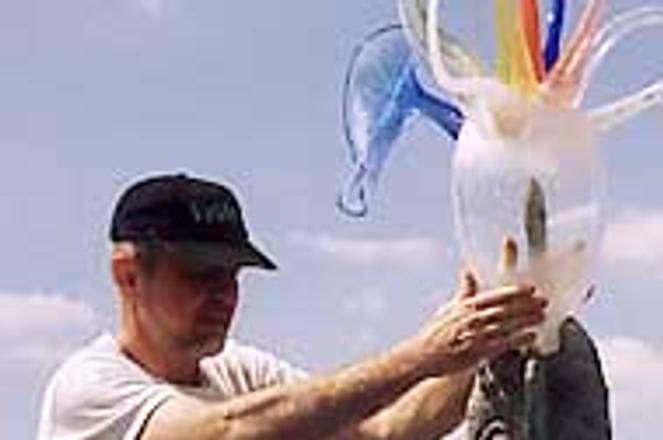THE DANUBIANA art museum as seen from across the river Danube.photo: Miroslav Cimerman
WITH TWO outstanding exhibitions having been held over at the Danubiana Art Museum near Bratislava, culture buffs still have a chance to see some of the highlights of Slovakia's summer cultural season.
The work of Slovak-Canadian sculptor Jan Stohl will remain on display until September 5. The exhibition, entitled Mirror of Destiny - Narcissus' Odyssey, as the name suggests is inspired by Greek mythology.
The Narcissus myth tells the story of a beautiful boy born with a prophecy that he will live a long life unless he comes to know himself. The strange prophecy is fulfilled when Narcissus drinks water from a spring in a meadow, sees his reflection and falls in love with his own image. The youth soon dies, tormented by his love for himself, and is changed into a flower which to this day bears his name.
In modern psychology, the myth is used to describe an excessive interest in oneself and one's physical appearance.
Human narcissism - past and present - is the focus of Stohl's installation, and the space of the Danubiana gallery provides the perfect ambience for his ideas. Its setting on the banks of the Danube lends the artist all the props he needs to stage the ancient story - the river and the side window of the gallery which reflects both the water and the art objects exhibited inside.
Stohl's work consists of 13 granite columns which are each approximately the size of a human body and have 'heads' made of coloured glass. A dozen of these columns stand inside the entrance hall of the museum, while the constellation is completed by a lone thirteenth pillar outside on the lawn. A second part of the exhibition involves 20 metal and wood pillars wrapped with coloured ribbons and standing in the water just outside the museum. As the columns sway in the wind, the scene resembles the city of Venice with its wooden poles marking the way for the gondolas.
JAN Stohl installing a 'Narcissus' piece.photo: Miroslav Cimerman
Visitors have to make up their own minds as to whether the exhibit symbolises only the Narcissus of legend or if it is also a reminder of our own self-love. But in a documentary about Stohl produced for the Slovak Television public channel, director Miroslav Cimerman hinted that the story of Narcissus was not outdated at all, and that in one way or another it lived on in all of us.
"The story of Narcissus is pertinent in the modern era because social frameworks are being broken," says Stohl. "People have too many choices, and they all have to decide for themselves. Under these conditions, deviations become very significant, with the best evidence being the 20th century, which was filled with 'monsters' who killed millions of people. They highlight one of Narcissus' characteristics - the feeling of omnipotence and at the same time the absolute inability to understand other people."
Stohl was born in Bratislava in 1954, but left in 1984 for Canada, where he has become an established artist focusing on commemorative sculptures and personal, free art.
The second exhibition that has been extended at the Danubiana gallery is a display of sculptures and graphics by Martín Chirino. Born in 1925 in Las Palmas de Gran Canaria, Chirino is widely regarded as one of the most significant Spanish sculptors of the 20th century.
The form of the spiral became one of his trademarks in the 1960's, and dominates the works exhibited in Danubiana. It appears either in its pure form as a sculpture or in combination with wood. Chirino's creations, beautiful in themselves in their simplicity, use spirals to evoke a feeling of harmony and perfection.
After his travels across Europe, Chirino returned to the Canary Islands and created a series called "The Black Queens," which was influenced by African art and surrealism. Chirino left Spain in 1967 for the United States, where he established a studio and divided his private and artistic life between these two countries.
Jan Stohl: Mirror of Destiny - Narcissus' Odyssey until September 5.
Martín Chirino: Sculptures / Esculturas until September 15.
Danubiana - Meulensteen Art Museum, Vodné dielo Čunovo (Čunovo Water Works), 20 kilometres southeast of Bratislava. Buses regularly from under the New Bridge (Nový most) in Bratislava.
Open Tue-Sun 10:00-20:00.
Admission: Sk60. For further information call 0903/605-505 or visit www.danubiana.sk


